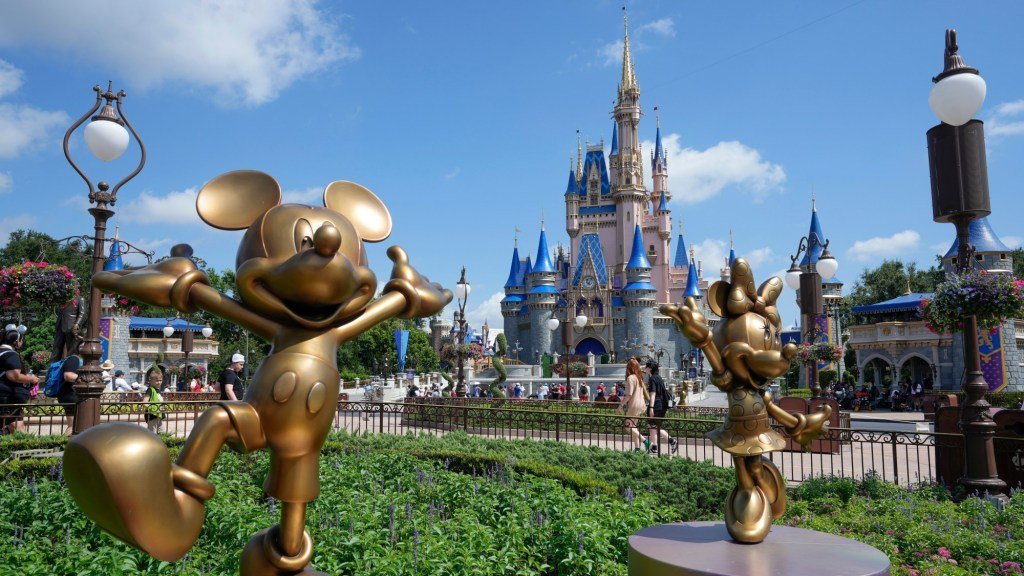Disney World Attendance Projected to Nearly Double by 2045
As the sun sets over Cinderella’s Castle, casting long shadows over the throngs of families snapping photos and children squealing in delight, Walt Disney World continues to flourish as a beloved icon of joy and wonder. Yet, according to new projections from the Central Florida Tourism Oversight District, this emblematic space is not merely resting on its laurels. By 2045, Disney World is expected to welcome a staggering 99.3 million visitors annually, nearly doubling its current attendance. This immense leap forecasted in the newly adopted Comprehensive Plan 2045 marks a pivotal juncture in the evolution of one of the world’s largest entertainment complexes.
A New Era of Expansion
The central feature of the Comprehensive Plan 2045 is the addition of one major and two minor theme parks. While Disney World currently has four parks and two water parks, the anticipated new venues aim to significantly enhance visitor capacity. The tourism district characterizes a “major theme park” as one comparable in size and scope to the existing parks, hinting at the ambitious scale of the prospects ahead.
The projected timeline is ambitious: the first minor theme park is scheduled to open by 2030, followed by the second minor theme park by 2035. The major park is planned for between 2035 and 2045, promising to draw an estimated 18.5 million visitors per year. This unprecedented increase in foot traffic is accompanied by forecasts of additional hotel rooms and jobs, projecting the need for 8,000 new hotel rooms and 11,000 more employees within the same timeframe.
Impact of Attendance Growth
The projected figures illustrate not just a spike in tourism, but a cascade of economic implications that ripple outwards. “A nearly 94% increase in visitors reflects a transformative time for Disney World and the Orlando economy,” says Dr. Leticia Moore, an economist specializing in tourism at the University of Florida. “Such growth not only serves to boost the immediate financial ecosystem surrounding the parks, but it also creates new challenges, like managing infrastructure and services.” The influx of visitors means more businesses could capitalize on the tourism boon, from hotels to restaurants.
- Projected Attendance Growth:
- Epcot: 68% increase from 12 million (2023) to 20.2 million (2045)
- Magic Kingdom: 59% increase from 17.7 million to 28.1 million
- Disney’s Hollywood Studios: 37% increase from 10.3 million to 14.1 million
- Disney’s Animal Kingdom: 33% increase from 8.8 million to 11.7 million
Challenges Looming Ahead
This ambitious growth does not come without its challenges. Concerns regarding environmental sustainability, traffic congestion, and pressure on local resources have emerged from various quarters. “While the economic benefits are significant, they must be balanced with social and environmental responsibilities,” remarks Judith Wong, a sustainability expert with the Florida Environmental Council. “Planning for 99 million visitors is not just about building attractions; it’s equally about considering the carrying capacity of ecosystems.”
Additionally, Disney World has historically faced challenges from natural disasters, with hurricanes since 1999 costing the resort approximately $677 million. An increase in visitors could heighten vulnerabilities if disaster preparedness measures are not adequately addressed.
Community Perspectives
Though the expansive plans are still in the early stages, local communities are already grappling with the implications. “More visitors can mean more opportunities,” says Tomás Garcia, owner of a local restaurant. “But if we don’t properly manage the growth, we risk losing the very charm that attracts people to Orlando in the first place.” As demand for housing and local services rises, many residents worry about the erosion of their communities’ character.
Amid this backdrop, the Central Florida Tourism Oversight District—recently established to replace the Reedy Creek Improvement District—promises to play a crucial role in navigating the complexities of this ambitious growth trajectory. The new governance aims to facilitate dialogue between stakeholders and ensure that the future development benefits both tourists and residents alike.
The Road Ahead
The Comprehensive Plan 2045 lays an ambitious foundation for the next two decades, signaling a shift not just for Disney World but for the region at large. With projections showing Disney World’s total hotel capacity growing to 41,000 rooms and employment reaching 89,000, the dynamics of community life in and around Orlando are poised for significant transformation.
As the parks prepare to welcome nearly double the number of visitors, the enchantment of Disney World is set to evolve. For families worldwide, the prospect of stepping into a larger-than-life realm remains a magical dream. But as the attendance figures climb, so too does the imperative to ensure that this quintessential American destination continues to thrive sustainably, holding true to its legacy while embracing the challenges of the future.









